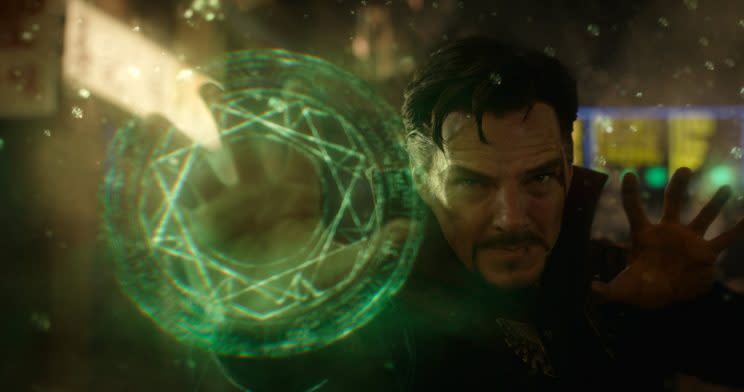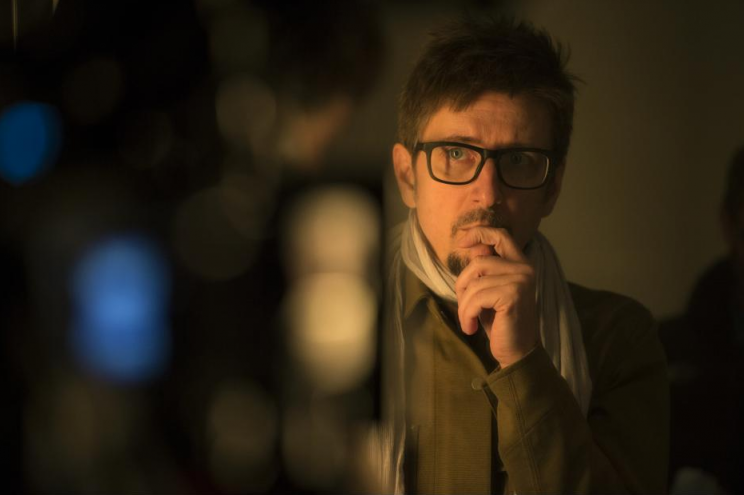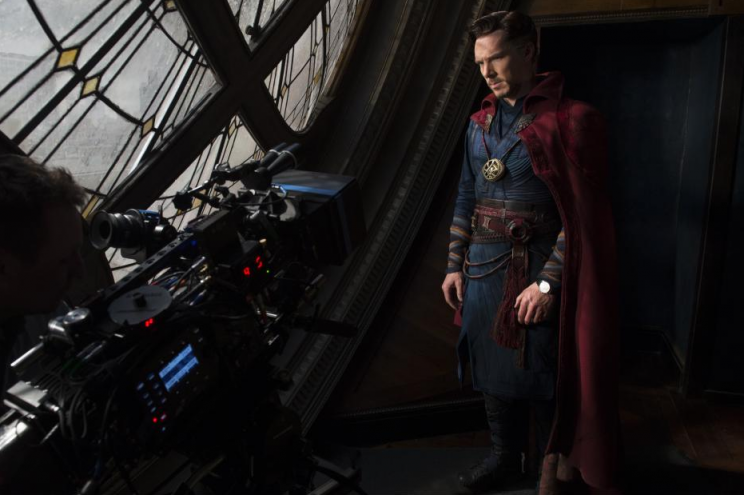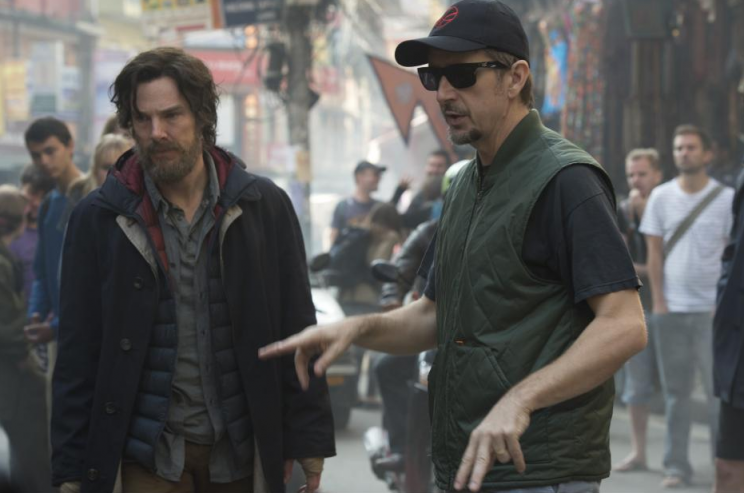Director Scott Derrickson on 'Doctor Strange' Sequel and His Future in the Marvel Cinematic Multiverse

Scott Derrickson’s roots are in horror (with such early hits as The Exorcism of Emily Rose and Sinister), but he made a triumphant transition into blockbuster superhero fare this past November with Doctor Strange, the first standalone cinematic adventure for Marvel’s magic-wielding, multiverse-traversing sorcerer. With a global haul of $660 million, the film was a smashingly successful introduction to the character, as well as a preface for his future adventures throughout the Marvel Cinematic Universe (it has already been revealed that he’ll appear in both Thor: Ragnarok, out Nov. 3, and Avengers: Infinity War, coming in May 2018). Ahead of the film’s home-video debut — on Digital HD on Feb. 14 and on Blu-ray and DVD on Feb. 28 — we spoke with Derrickson about his experiences making Doctor Strange, what he knows about Marvel’s upcoming efforts, and his interest in staying involved in any sequels.
Yahoo: Congratulations on the Best Visual Effects Oscar nomination — I’m sure the entire Dr. Strange team is excited about the honor.
Scott Derrickson: Thank you so much. I genuinely appreciate that.
Doctor Strange’s visual effects help differentiate it from the rest of the MCU’s other entries. Was the opportunity to explore such imagery one of the main selling points for you, in terms of taking on the project?
Yeah. I think it was one of the selling points that I brought to Marvel that helped me get the job. I had a very strong position about that — that I, as a viewer, am growing weary of not just comic-book movies, but tentpole movies always using these big-budget visual effects to create the same kind of mass-destruction. It’s stimulus through mass destruction — gunfights, explosions, etc. Doctor Strange was a property that I loved very much, and it was crying out to be a movie where the visual effects sequences did none of that.
Related: See How ‘Doctor Strange’ Turns Psychedelic Comic Art Into 3D Animation
Instead of using extensive big-budget visual effects for mass destruction, using them for creativity — magical creativity. To try to create a sense of awe, or shock, or inspiring imagery that’s dense and original. And to surprise an audience with a kind of stimulation that’s not passive, but wakes you up a bit and makes you take more notice. That was always my approach on the movie.

What was the process of translating the comics’ weird, fantastical imagery to the screen? And were there, as you implied, certain things you tried to avoid in doing that, so the film felt different than prior fantasy/magic/superhero movies?
Magic has a kind of shorthand in the history of cinema — you know, spells, magic wands, amorphous light, amorphous smoke, things that convey mystical imagery. I really wanted magic in this movie to be something very different, in that I wanted it to be weird and trippy, but to also be very tactical texturally. To have a textural relatability to it. So it’s more about the manipulation of familiar surfaces and textures and objects. For things that are surreal in other dimensions, the audience could understand how it would feel if they could touch them. The portals made of sparks instead of magic brew and amorphous light. This sort of stuff. Getting rid of the old vernacular and trying to create something new, and using things like fractal motion to create a surreal quality. Those were all part of the starting point for the aesthetic of the movie.
Related: ‘Doctor Strange’ Makes Room for More Thor on Home Release
And the end goal being — a mind-trip action movie, about one character overcoming himself. That was always my singular target for Doctor Strange.
How hard was it to balance those goals with the need to make sure Doctor Strange fit into the larger MCU?
That wasn’t difficult at all, because in terms of plot and story, there’s not much integration; the movie stands alone. Stephen Strange doesn’t really enter the MCU until the end of the movie, when you start talking about Infinity Stones, and you see the Thor tag and all of that. Before that, it’s very much a standalone movie.
Tonally, I didn’t feel obligations to anything but the comics. I felt that, knowing Marvel comics as well as I do, and watching the way the MCU has evolved, that Kevin Feige has done an amazing job of hiring directors who brought a sensibility that fit the sensibility of those comics. And that sensibility then made the transfer from the comics pages to the screen really well, through those selected filmmakers. I don’t think anybody else could have done Guardians of the Galaxy the way James Gunn did; he was the guy to do that. And I think their confidence in me was, I really have strong feelings about how the Doctor Strange comics feel, and what makes a Doctor Strange comic great. My only goal was to transfer that onto the big screen.
Related: What ‘Doctor Strange’ Means to the Future of the Marvel Cinematic Universe
I knew if I did that effectively, it wouldn’t feel like it was divorced from the MCU, in the same way the comics in the ’60s weren’t divorced from the rest of the Marvel comic universe of Spider-Man and Captain America and all these other characters that existed. But it would be a little bit of a weird aberration! [laughs] It would be a left turn. And we needed that left turn. I was ready for that left turn. I was ready to see, this year, Deadpool and Doctor Strange — two movies that took comic-book movies into new directions. That’s what they have to do. That’s how Stan Lee kept Marvel alive for so long, is that when it came time, he would do that — he would introduce a crazy ’60s psychedelic character like Doctor Strange who would go out into the astral plane and into the multiverse, you know? That was so great. And that was the only thing I felt — the pressure to capture the comics, not the pressure or restrictions to fit into the MCU. I wanted to expand the MCU.
It does just that — and the film does seem well timed, given that the MCU’s foundation already exists, and Doctor Strange can then expand upon it.
We’re starting the MCM — the Marvel Cinematic Multiverse. [laughs]
It sounds like you’re a longtime fan of the Doctor Strange comics. How did you wind up getting your foot in the door for the film and proving to Marvel that you were the guy who best understood the material?
I am one of those guys who grew up reading comics as a kid. You know, my dad brought home a cardboard box with over a thousand comics one day, when I was really young. To this day, I don’t know where he got them from. But I just started plowing through them, and I mostly read Marvel comics. I’ve carried a Marvel wallet for the last five years now. I put it on the desk in front of Kevin Feige in our first meeting, and told him, “I’ve owned this wallet for two years!” And I still have that same wallet. So I’m just a genuine fan of those comics.
Related: ‘Doctor Strange’ 101 — Your Ultimate Guide to the Sorcerer Surpreme, From Astral Planes to Vishanti
For me, it was Doctor Strange and Fantastic Four that I gravitated to the most. And with DC, it was Aquaman. Those comics are really about other worlds, and about fantastical, grandiose realities, and I just loved that as a kid. And Doctor Strange especially, because I also just connected with that character, and the isolation of that character. I think that desire, not to be slavish to any particular story points, but to capture the heart and soul of especially the early Lee-[artist Steve] Ditko comics, was a big part of why I got the job.

While working on Doctor Strange, how much work went into mapping out future installments, and where the hero will fit into the larger MCU tapestry? Or are those concerns more peripheral to the process?
They’re entirely peripheral. I think they’re entirely peripheral even for Kevin Feige, who’s the guy who really directs that stuff and has to hold the direction of the MCU in his mind, kind of exclusively. I’ve heard him talk about it, that they don’t have really big future ideas going all the time, and then force the movies to fit into those future ideas. I think one of the reasons it’s working over there at Marvel Studios is that they’re approaching it the same way Stan Lee did, in writing the comics. Which is, do it one comic at a time. They’re doing one movie at a time. And just making the next best step, and seeing where that leads. It turns into a really beautiful creative evolution, if you’re always looking for the best possible idea for each individual movie.
Related: Marvel Boss Kevin Feige Says Benedict Cumberbatch Was Worth the Wait
Then, finding ways to tie them together, that becomes the burden of the Avengers filmmakers [laughs]. It certainly was never mine.

So you don’t have a hand in how Doctor Strange will factor into Thor: Ragnarok or Avengers: Infinity War or even his own sequels?
I have no hand in it whatsoever. My hand was handing over the character. Which I was really glad to do. I didn’t ask for more input; I don’t really want more input. I want to see those movies and be surprised like everybody else. I might feel more territorial about the character if I didn’t love the filmmakers so much. You know, I can’t wait to see what Taika (Waititi) does with Doctor Strange. He shot the tag scene, which was just a joy for me, the first time I saw it. And I enjoyed that so much, I can’t wait to see how he uses him in Thor: Ragnarok.
The Russos are great filmmakers, and I’m friends with Joe, and they’re going to do amazing things with this character. I’m just glad I was able to help establish a character that was good enough to have life in those movies.
Do you have any idea where they’re taking Doctor Strange? Or where those movies are going, period?
I don’t know anything about Thor: Ragnarok — Taika and I are Twitter friends, but I don’t know him so well. I know Joe [Russo] a lot better, and I know the plot for Infinity War because I ran into him in front of the men’s room at Marvel one day, and we just got to talking and he ended up pitching me the story of Infinity War, which was great [laughs]. So I know the basic story of Infinity War because we both had to pee at the same time — and that’s really the only reason.
But how Doctor Strange is going to be used in it? I don’t know. That’s their thing to worry about.
Do you have a desire to continue with the franchise? Or to at least help guide where Doctor Strange is going in terms of his own stand-alone endeavors?
Yes, very much so. I definitely have a desire to keep working on these movies, and I’d love to do Doctor Strange 2. If that timing doesn’t work out for some reason, I’d like to stay involved, because I care very much about the development of that franchise. I really want it to be great. And I hope it all works out, because I’d love to keep doing it.

